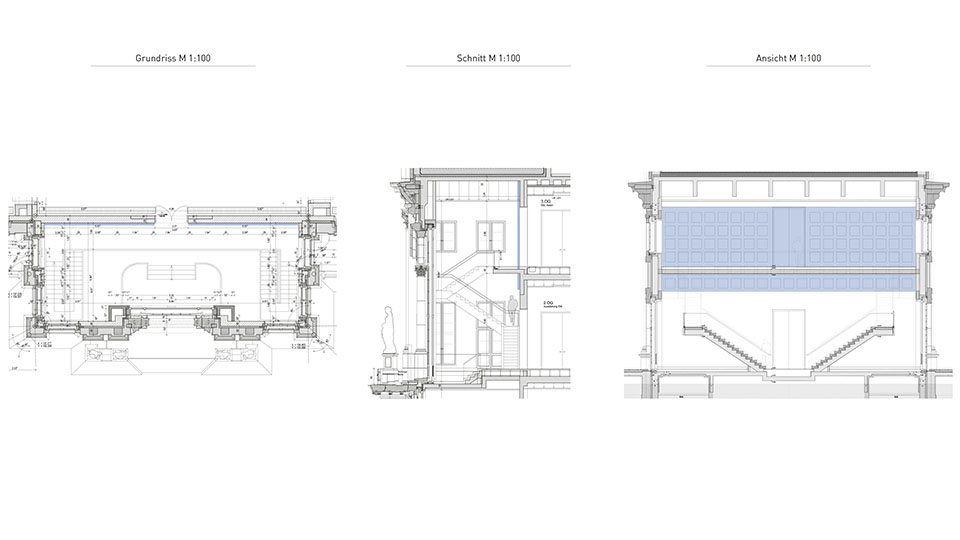Studio Hildebrand
Mag.Art. Christoph Hildebrand
+49 0163 5810594
ch@studio-hildebrand.net




Mag.Art. Christoph Hildebrand
+49 0163 5810594
ch@studio-hildebrand.net







Das Anliegen jeder historischen, ethnologischen oder naturwissenschaftlichen Sammlung liegt darin, möglichst viele Schlüsselwerke in ihrer Sammlung vereinigen zu können. Dazu umfassend und prägend beitragen zu können, entfacht den Ehrgeiz ihrer Sammler, Wissenschaftler, Stifter und Direktoren (Humboldt, Schliemann, . . . )
ICONS unternimmt den Versuch, die Schlüsselwerte des 21. Jahrhundert in Form von Piktogrammen zu kartographieren. Die „Icons“ haben sich mit der digitalen Revolution inzwischen als ein universelles Kommunikationsmittel etabliert, das fast Jeder – über kulturelle Grenzen hinweg – versteht.
Viele Themen werden in den Navigations- und Werkzeugleisten der digitalen und sozialen Medien in Form von Piktogrammen adressiert. Viele weitere finden sich in den Leitsystemen, wie sie Anfang des 20. Jahrhunderts für den öffentlichen Raum entwickelt wurden und inzwischen weltweit verbreitet sind.
Das Medium für ICONS ist ein Klassiker der Werbetechnik. Die Neonröhre hat sich sehr bald mit der Elektrifizierung unserer Städte als Träger von Botschaften aller Art, ob Text, Bild, Zeichen oder Animation in den Stadtraum und in die Nacht eingeschrieben. Erst seit etwa 10 Jahren wird sie zunehmend von der LED-Technik verdrängt.
Der Charme des Neonlichts aus hochwertigen Farbgläsern, die aus dem venezianischen Murano kommen, ist aber ungebrochen. Der kunsthandwerkliche Charakter der von Glasbläsern gefertigten Neonmotive ist durchaus auf Augenhöhe mit den Exponaten der Sammlungen.
Präsentiert wird die Sammlung aus Neonzeichen auf museale Weise wie wertvolle historische Artefakte in flachen Wandnischen hinter Schutzscheiben aus Glas. Im 3.OG wird die gesamte Wand bespielt, im 2.OG bilden die Zeichen einen Fries mit klassisch antiker Anmutung. Mehrere Plätze bleiben frei, um den fragmentarischen Charakter der Sammlung zu unterstreichen und vorausschauend die Möglichkeit für „zukünftige“ Ergänzungen vorzuhalten.
Dargestellt im Entwurf ist aus Platzgründen nur ein Portal. Die Sammlung von Piktogrammen kann in ähnlicher Weise beim zweiten Portal fortgeführt werden.
Alternativ könnten beim zweiten Portal die Neonzeichen des ersten Portals durch tatsächliche „Artefakte“ des 21. Jahrhunderts gespiegelt werden. Dazu würden in den Kassetten statt der Neonkonturen signifikante Gegenstände montiert werden, die „pars pro toto“ auf die entsprechenden Themen und Werte verweisen: z.B. Küchenmixer, Leuchtglobus, Besteck und Teller, Barbiepuppen, Handgranaten, Handys, eine gestickte PEACE-Tasche, etc . . .
//
The concern of every historical, ethnological or natural science collection is to be able to unite as many key works as possible in its collection. To be able to contribute to this in a comprehensive and formative way sparks the ambition of its collectors, scientists, donors and directors (Humboldt, Schliemann, . . . ).
ICONS attempts to map the key values of the 21st century in the form of pictograms. With the digital revolution, „icons“ have now established themselves as a universal means of communication that almost everyone – across cultural boundaries – understands.
Many topics are addressed in the navigation and toolbars of digital and social media in the form of pictograms. Many more are found in the guidance systems as they were developed for public spaces in the early 20th century and are now used worldwide.
The medium for ICONS is a classic of advertising technology. Very soon, with the electrification of our cities, the neon tube inscribed itself in urban space and in the night as a carrier of messages of all kinds, whether text, image, sign or animation. Only in the last 10 years or so has it been increasingly displaced by LED technology.
However, the charm of neon lights made of high-quality coloured glass from the Venetian Murano remains unbroken. The artisanal character of the neon motifs made by glassblowers is definitely on a par with the exhibits in the collections.
The collection of neon signs is presented in a museum-like manner like valuable historical artefacts in shallow wall niches behind protective panes of glass. On the 3rd floor, the entire wall is covered, on the 2nd floor, the signs form a frieze with a classical antique look. Several spaces are left empty to emphasise the fragmentary character of the collection and to anticipate the possibility of „future“ additions.
Only one portal is shown in the design for reasons of space. The collection of pictograms can be continued in a similar way at the second portal.
Alternatively, the neon signs of the first portal could be mirrored by actual „artefacts“ of the 21st century. For this purpose, significant objects would be mounted in the cassettes instead of the neon outlines, which refer „pars pro toto“ to the corresponding themes and values: e.g. kitchen mixers, illuminated globes, cutlery and plates, Barbie dolls, hand grenades, mobile phones, an embroidered PEACE bag, etc . . . .
P R O P O S A L Competition Humboldt-Forum in Berlin 2017 + D E S I G N neon tubes / glass panels / electronic ballast / 60 moduls 45x45cm / 2 moduls 115x115cm / second floor 15.40 x 1.00m / third floor 15.40 x 3.70m / thickness 6cm + S U P P O R T / + M E D I A 3 images © Christoph Hildebrand + T A G S Light / Proposal / Urban / +
